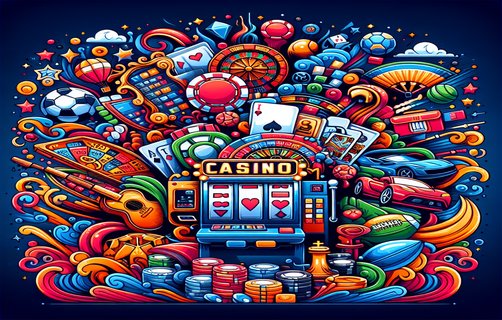Spin to Lose: The Underbelly of Slot Gaming
In the kaleidoscopic world of casinos, slot machines frequently capture the attention of both casual visitors and seasoned gamblers. With their flashing lights and enticing sounds, they promise a chance at fortune. However, as the curtain draws back for a closer examination, it becomes evident that behind the allure lies a landscape fraught with pitfalls, especially from the loser's perspective.
The most fundamental aspect of slot machines is their design—a careful orchestration of psychological hooks crafted to entice players into a cycle of betting and loss. Unlike traditional poker where players can opt to raise or fold based on strategic assessments, slot machines operate on a pure luck principle, draining players' finances in an exhilarating but often devastating manner. As losses pile up, emotional decision-making can overshadow rational thought, resulting in a troubling spiral of continuous play, fueled by the misguided hope of a big win.
Today’s casinos have evolved into finely tuned brands that understand the mechanics of attraction. Through sophisticated marketing strategies, they have established environments that promote longer play sessions and higher spending. Brightly colored designs and compelling themes mask the stark reality of the odds stacked against players, positioning the experience as fun and social rather than a dangerous gamble. This branding reinforces a cycle where losses can become unacknowledged as players frequently return, chasing the elusive ‘glory’ of a significant payout.
New game releases are constantly hitting the market, each one more eye-catching than the last. These games often integrate trending themes and innovative features, designed specifically to keep players engaged. However, the relentless pressure to try the latest game can lead participants further into financial distress, as new additions often come with erratic payout structures, making it even harder for players to glean insights about when to exit the game or take a breather.
The advent of touchscreen optimization has added another layer of complexity to the traditional slot experience. These digital interfaces allow for a more immersive engagement with the game, often leading to overspending. Given the accessibility and constant availability of touchscreen slots, the temptation for immediate gratification becomes ever-present, which can blur the lines between responsible gaming and relentless hope in the quest for a win.
Accompanying these advancements are various gambling tools marketed to help players curb their spending. Features like betting limits, time reminders, and self-exclusion options are intended to foster a healthier gambling environment. However, these tools can often be ignored in the heat of excitement, as players' inhibitions are further eroded by the bright screen illuminating their faces and the anticipation of potential success.

All these elements—strategy, branding, game design, and gambling tools—coalesce to shape a paradoxical experience in slot gaming. While casinos promise entertainment, the reality is shaped by an intricate web of design ethos, psychological triggers, and strategic pitfalls. With the 24/7 support offered by many casinos, players may feel reassured that help is at their fingertips, yet, the fine line between help and exploitation looms large, as support often serves more to facilitate further play than to mitigate losses.

In conclusion, the glitzy appeal of slot machines belies the risk of financial drain that can engulf unwary players. The analysis reveals a battered landscape where, for many, the experience is about chasing losses rather than wins. Understanding these dynamics is crucial for anyone entering the slot gaming realm, serving as a reminder that fortune is often much less favorable than advertised.
